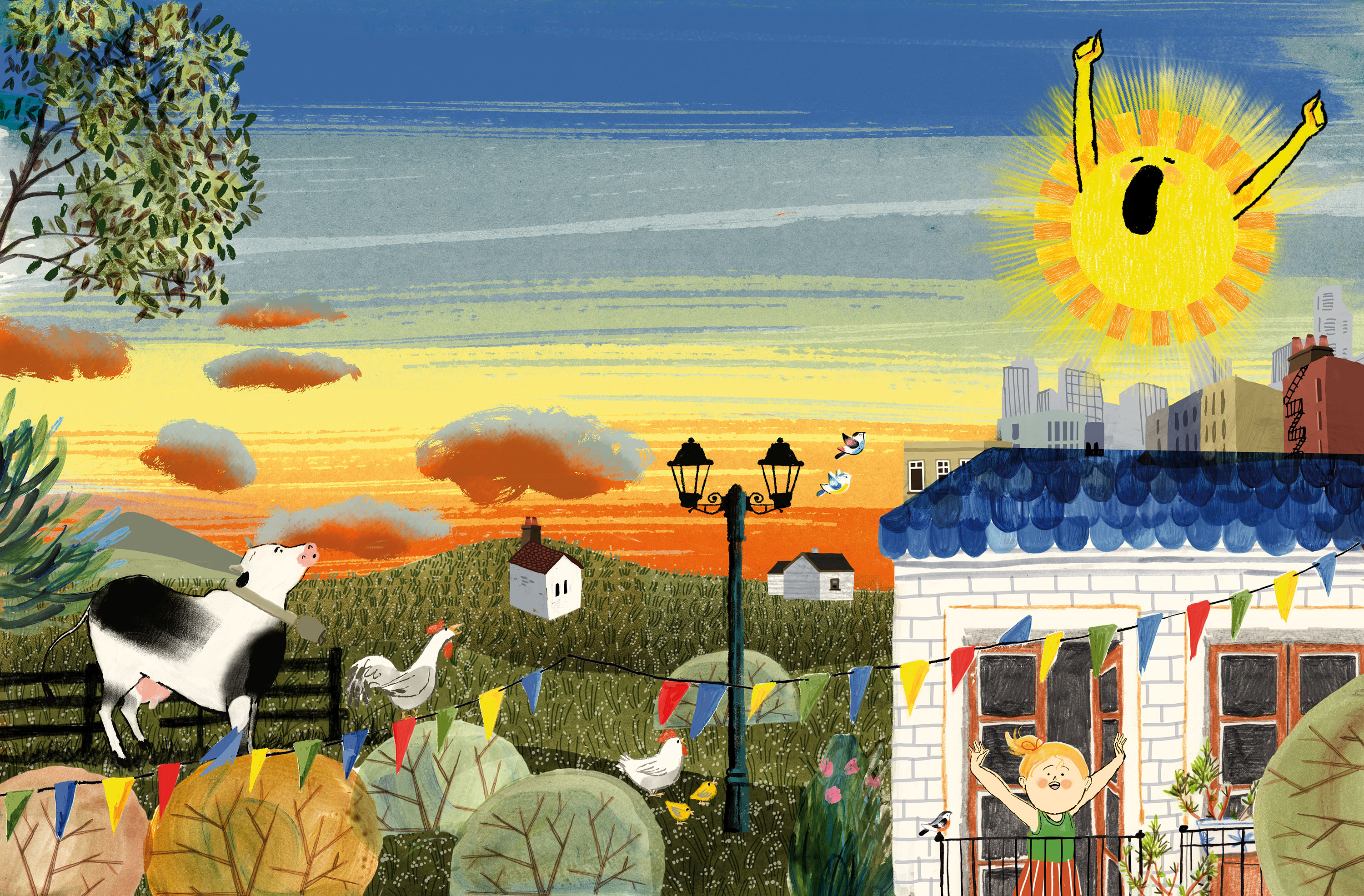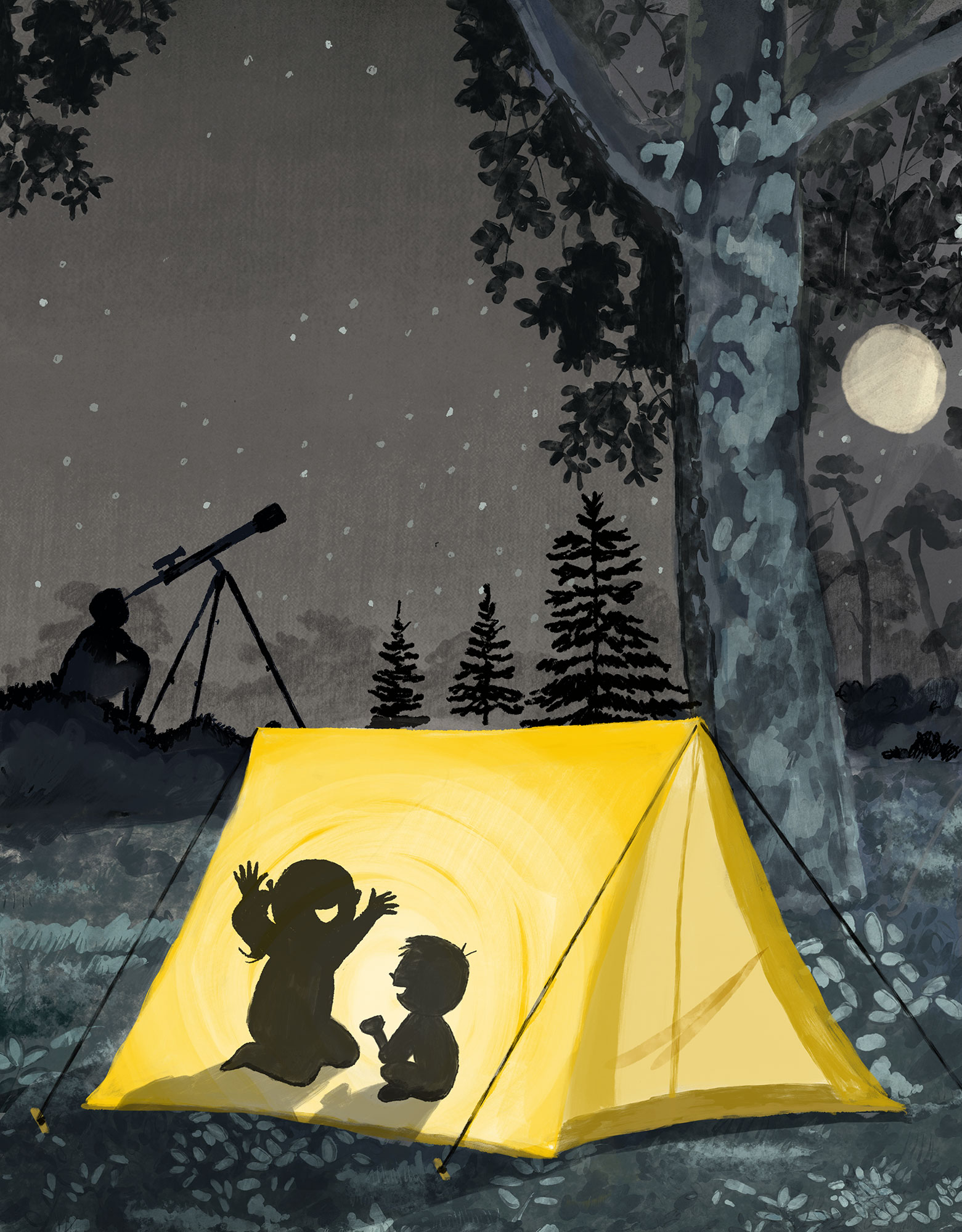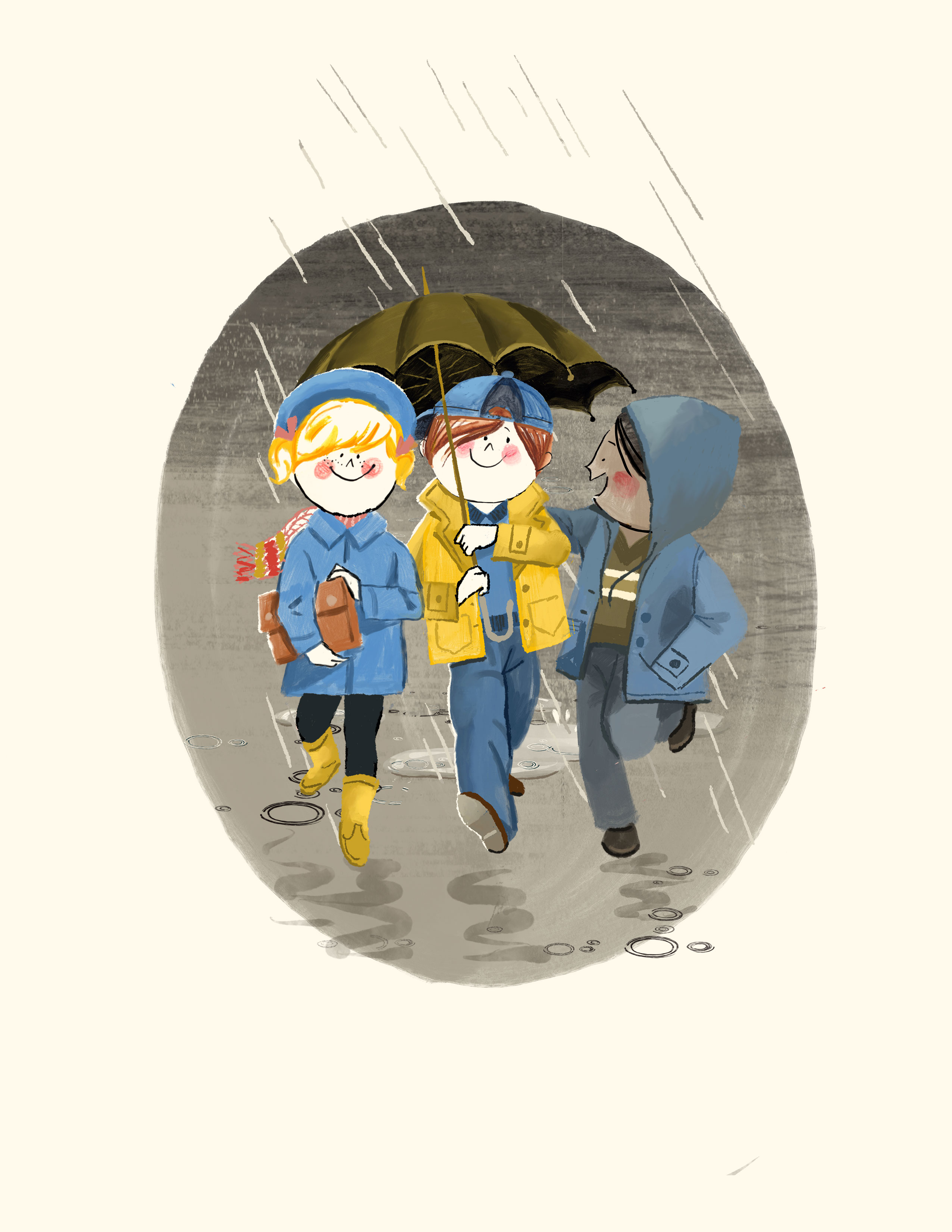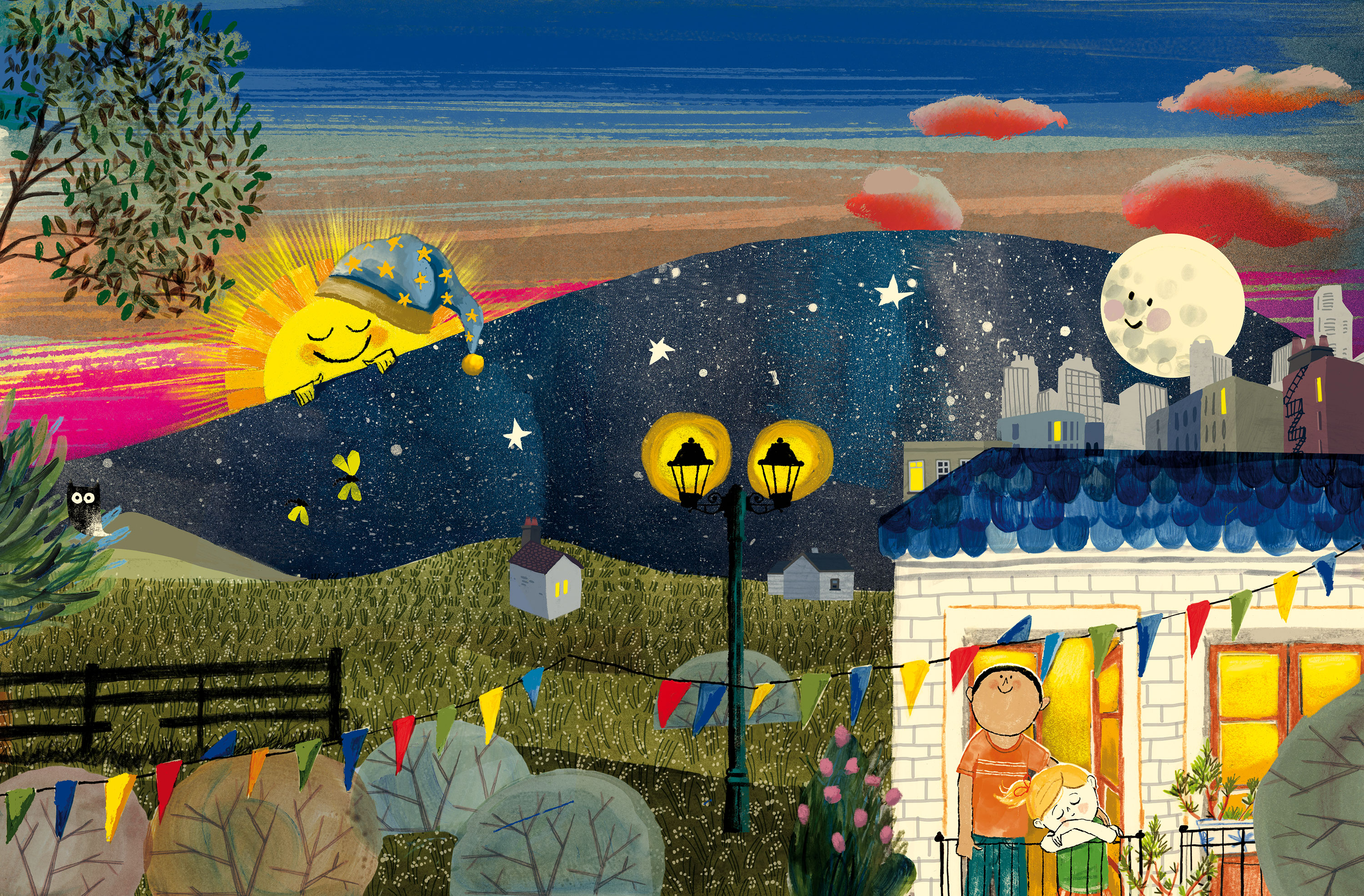THE SUN SHINES EVERYWHERE
Written by Mary Ann Hoberman
Illustrated by Luciano Lozano
Little, Brown and Company, USA and Canada, 2019
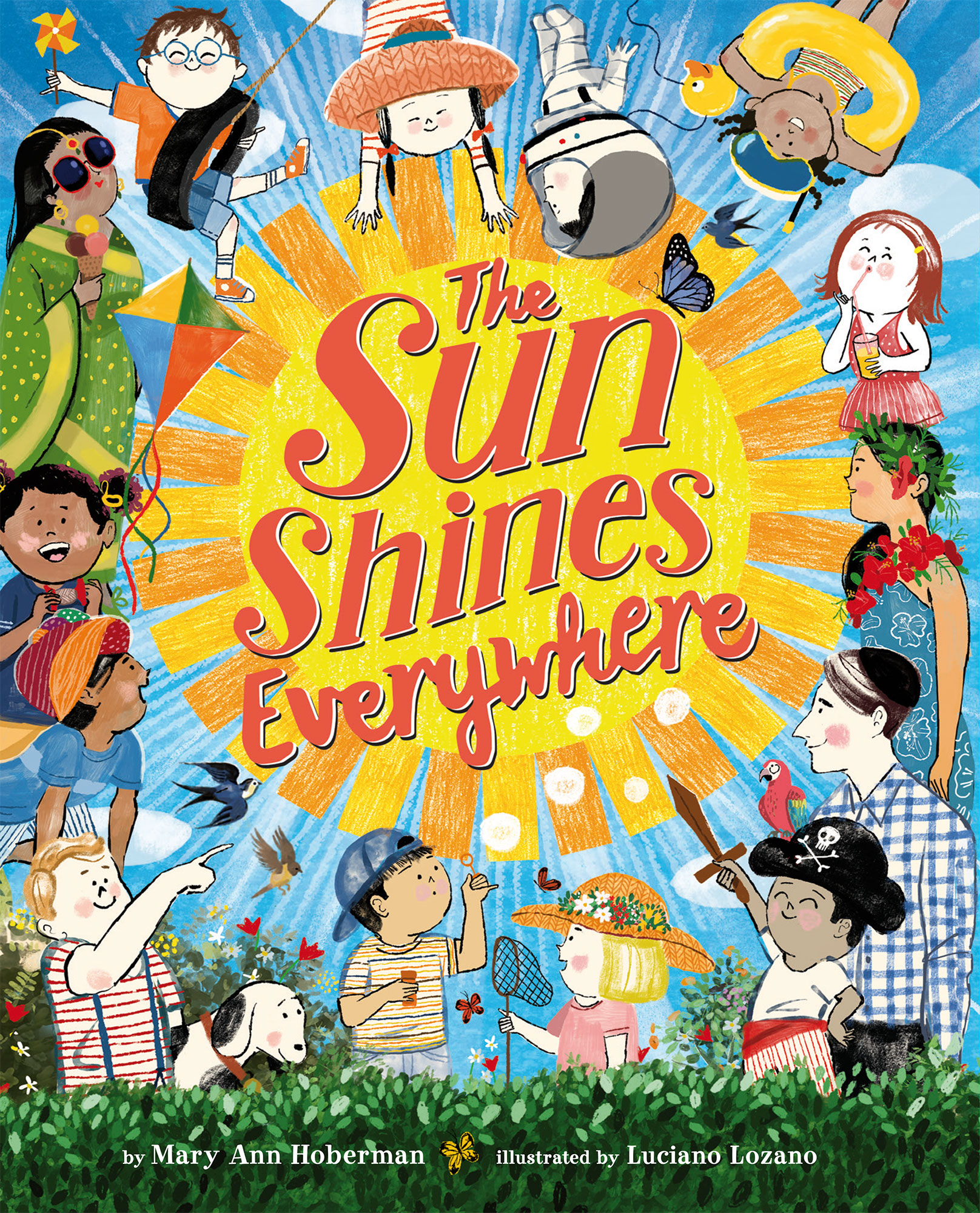
An ebullient tribute to geographic and cultural diversity on this planet.
Bouncy rhyming text takes readers on a whirlwind journey around the globe, always ending with the unifying, titular refrain: “The sun shines everywhere.” Children play and interact in Japan, the United States, India, and more, all basking in warmth and sunshine. White, brown, and black faces appear throughout, including a multiracial family (although they all seem to have rather similar facial features). Lively illustrations feature various religious garments such as a Sikh turban and a Pakistani topi. A similarly global approach to biodiversity depicts cold-weather animals in Antarctica, nocturnal and subterranean animals in the Americas, dinosaurs and other prehistoric animals, and more. The text even broadly references a few key historical periods, featuring the Egyptian pyramids, classical Greek philosophers, a medieval castle, and Copernicus. Some depictions make this a less-than-ideal text for STEM learning: Landforms on a freely drawn globe are more suggestions than anything else; puffins are not found in Antarctica. Nevertheless, bright, digitally produced illustrations feature eye-catching, immersive spreads full of children at play amid vivid flowers, a variety of architectural styles, and lots of tiny details that encourage readers to look closer.
A celebration of unity through variety that’s just right for these divided times.
—Kirkus Review
Bouncy rhyming text takes readers on a whirlwind journey around the globe, always ending with the unifying, titular refrain: “The sun shines everywhere.” Children play and interact in Japan, the United States, India, and more, all basking in warmth and sunshine. White, brown, and black faces appear throughout, including a multiracial family (although they all seem to have rather similar facial features). Lively illustrations feature various religious garments such as a Sikh turban and a Pakistani topi. A similarly global approach to biodiversity depicts cold-weather animals in Antarctica, nocturnal and subterranean animals in the Americas, dinosaurs and other prehistoric animals, and more. The text even broadly references a few key historical periods, featuring the Egyptian pyramids, classical Greek philosophers, a medieval castle, and Copernicus. Some depictions make this a less-than-ideal text for STEM learning: Landforms on a freely drawn globe are more suggestions than anything else; puffins are not found in Antarctica. Nevertheless, bright, digitally produced illustrations feature eye-catching, immersive spreads full of children at play amid vivid flowers, a variety of architectural styles, and lots of tiny details that encourage readers to look closer.
A celebration of unity through variety that’s just right for these divided times.
—Kirkus Review
